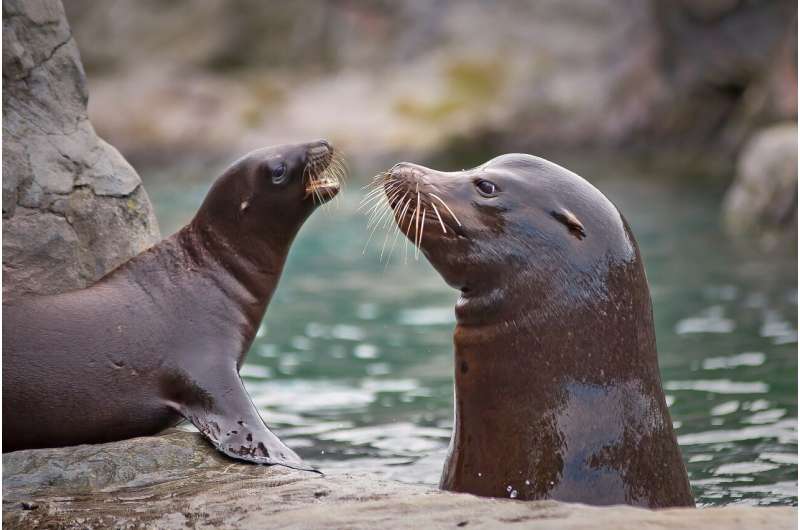Sea lion diagnosed with tuberculosis triggers public health concerns

Australian sea lions are an endangered species. New research suggests endemic tuberculosis might be another health threat facing the pinnipeds. Dr. Rachael Gray is working to help save our sea lions.
Researchers from the University of Sydney have reported the first case of tuberculosis in an endangered, free-ranging juvenile Australian sea lion in South Australia. The type of disease is not the typical presentation of tuberculosis, as this was not found in the animal's lungs, but in its abdomen.
"This finding is significant because tuberculosis is a zoonotic disease, which means it is transferable to humans, so there are public health risks to consider," said Dr. Rachael Gray, from the Sydney School of Veterinary Science.
"There is risk of transmission for researchers handling the animals, as well as anyone involved in animal rescue or washed-up carcass disposal, or those working at rehabilitation centers and involved in the disease diagnostic process," she said.
The discovery has been published in the Journal of Wildlife Diseases.
Finding the young male
The discovery was made after a three-year-old juvenile male Australian sea lion died in 2017 shortly after hauling itself onto Kingscote beach, Kangaroo Island, South Australia. During an autopsy, the animal was determined to have small intestinal perforation and partial obstruction due to a strangulating fibrous mass.
Dr. Gray said: "This unusual finding means we need to maintain constant vigilance around zoonotic disease risk for any person in close contact with free-ranging pinnipeds [seals, sea lions and walruses] of juvenile age or older, independent of presenting signs
Breeding colonies
Dr. Gray, who conducted the study with Mr Scott Lindsay, a veterinary pathologist at the University of Adelaide and a Ph.D. candidate at the University of Sydney, said the location where the diseased sea lion was found was close to the breeding colony where the animal was born.
Mr Lindsay said: "A review of tuberculosis in Australian sea lions and other pinniped species suggests the disease is likely endemic in the population and is now confirmed in a geographical region contributing to the majority of pup births in this endangered species.
"Increased serological surveillance of the population is recommended to assess the species' risk from this and other endemic diseases," he said.
Australian pinnipeds
Dr. Rachael Gray and her team of scientists have been conducting world-class research in South Australia in order to save the endangered sea lion.
The Australian sea lion is the only pinniped species endemic to Australian waters, ranging from the Houtman Abrolhos islands off the west coast of Western Australia to the Pages Islands in South Australia. The species is endangered, with a decreasing population trend (International Union for Conservation of Nature Red List) from a low baseline attributed to 19th century commercial sealing.
The small population size increases the species' risk of catastrophic disease impact, as seen in the New Zealand sea lion where Klebsiella pneumoniae-associated neonatal septicaemia and meningitis contributed to 58 percent of pup deaths between 2006 and 2010.
Hookworm infection provides an existing disease pressure for the Australian sea lion. Further, recovery from a significant disease impact would be limited by the species' low reproductive rate. The majority (86 percent) of pup births occur in South Australia where there is dependence on just eight large breeding colonies, including Seal Bay, Kangaroo Island.
More information: Scott A. Lindsay et al. A Novel Presentation of Tuberculosis with Intestinal Perforation in a Free-Ranging Australian Sea Lion (Neophoca cinerea), Journal of Wildlife Diseases (2021). DOI: 10.7589/JWD-D-20-00104
Journal information: Journal of Wildlife Diseases
Provided by University of Sydney



















